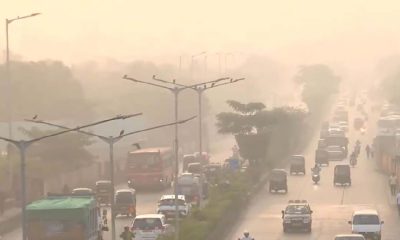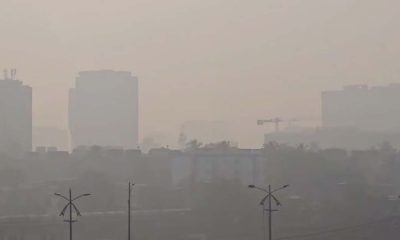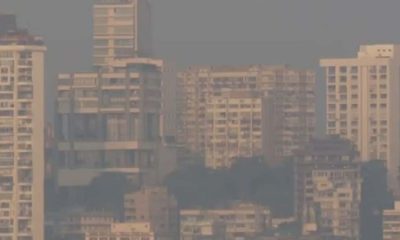National News
Jammu and Kashmir Votes From Sept 18 in 3 Phases, Single-Phased Haryana Election On Oct 1; Results On Oct 4 – Check Full Schedule Here

The Election Commission of India announced the schedule for assembly elections in Haryana and Jammu and Kashmir on Friday.
Addressing a press conference in the national capital, Chief Election Commissioner Rajiv Kumar said Jammu & Kashmir will go to polls in three phases.1 st phase on 18th Sept, 2nd phase on 25th September, 3rd phase on 1st October. Counting off votes will be held on 4th October.
Haryana votes in single phase for 90 seats on October 1, results to be declared on October 4. It will coincide with the last phase of Jammu and Kashmir. The announcement came after officials from the central poll body recently visited both states to oversee election preparations.
“There are a total of 90 assembly constituencies in Jammu and Kashmir, of which 74 are general, SC-7 and ST-9. There will be a total of 87.09 lakh voters in Jammu and Kashmir, of which 44.46 lakh are males, 42.62 lakh are females, 3.71 lakh are first-time voters and 20.7 lakh are young voters. The Amarnath Yatra will end on August 19 and the final voter list will also be published on August 20,” Rajvi Kumar said.
A look at region-wise elections in J&K
In Jammu and Kashmir, the main regions that will go to polls in the first phase are Pulwama, Anantnag, Shopian, Kulgam, Ramban, Kishtwar, Doda
The second phase will see elections in Srinagar, Ganderbal, Poonch, Rajouri, Reasi.
The final phase of polls comprises of north Kashmir, Udhampur, Jammu and Kathua going to polls in the Union Territory.
First Assembly Election in J&K Since 2014
Jammu and Kashmir may have assembly elections for the first time since the abrogation of Article 370. The union territory was under the president’s rule.
In December last year, the Supreme Court directed the central government to conclude the election process in Union territory by September 30, 2024. Jammu and Kashmir will witness elections after a gap of ten years, as the last assembly election was held in 2014.
The PDP-BJP coalition government fell in June 2018 when the latter withdrew support for the then-Chief Minister, Mehbooba Mufti. Recently, a poll body delegation led by Chief Election Commissioner Rajiv Kumar reviewed the poll preparations in J&K. During a press conference in Jammu during the visit, Kumar emphasised that the commission is committed to holding elections there “at the earliest”.
Business
India’s infrastructure market expected to hit Rs 25 lakh crore by 2030: Report
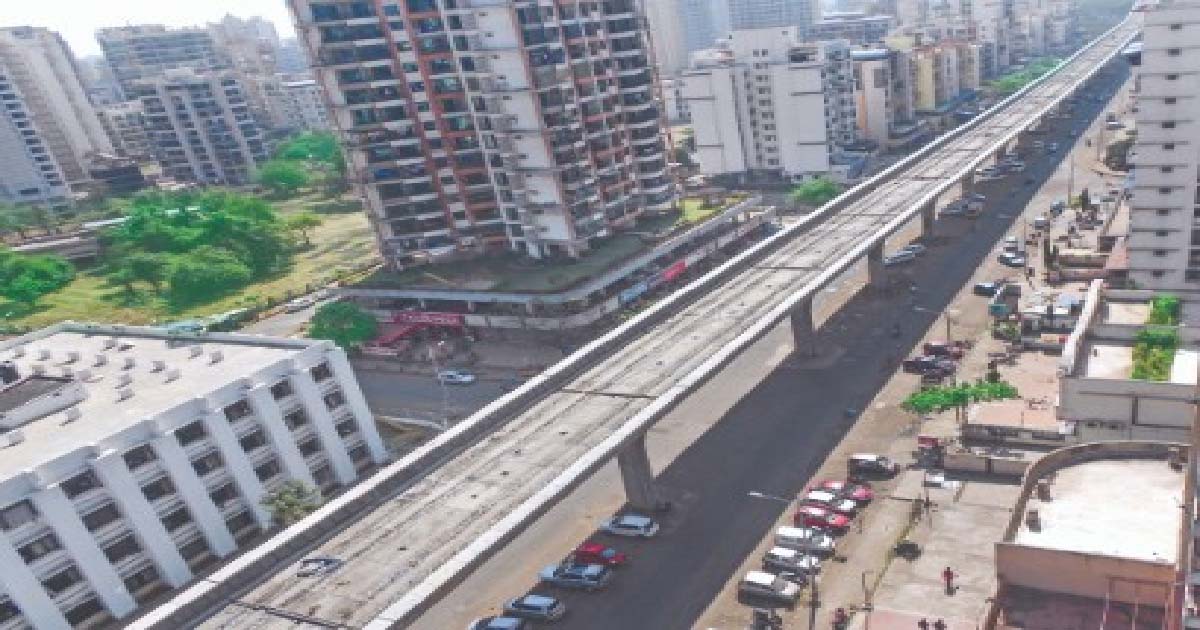
New Delhi, Nov 25: India is entering a multi-year infra super-cycle, with the Nifty Infrastructure index delivering 2 times returns of the Nifty 50 over the past three years, a report said on Tuesday.
India’s infrastructure equities have evolved from defensive to high‑beta, high‑alpha and could nearly double in market size by 2030 to around Rs 25 lakh crore, the report from Smallcase said.
Analysts said that the growth is driven government spending and private capex revival — helped by PLI schemes, global supply-chain shifts, and manufacturing incentives.
Smallcase estimated that Rs 1 of infrastructure capex delivers roughly Rs 2.5 — Rs 3 of GDP impact.
Markets are likely to maintain a high beta to infrastructure execution; earnings visibility across engineering, construction, industrials, cement, power equipment and logistics remain robust, the report noted.
InvITs growth will be underpinned by predictable, contract-based revenue streams offering pre‑tax yields of about 10–12 per cent and post‑tax returns near 7–9 per cent generally higher than many conventional fixed-income instruments.
The Nifty Infrastructure Index returned 14.5 per cent, 82.8 per cent and 181.2 per cent over the past 1, 3 and 5 years, outperforming the Nifty 50’s 10.5 per cent, 41.5 per cent and 100.3 per cent, the report said.
“Though Infrastructure investment in India Although these assets can experience temporary fluctuations during periods of market uncertainty, their historical volatility of about 10.2 per cent is well below the equity market’s 15.4 per cent, resulting in comparatively steadier performance,” said Abhishek Banerjee, Investment manager on smallcase, and founder of LotusDew.
With a correlation of only 0.42 to equities, infrastructure platforms tend to behave similarly to utilities, producing consistent, inflation-linked income that is largely unaffected by economic swings, he added.
National News
Sadiyo ke ghav bhar rahe hain: PM Modi at Ram Temple Dhwajarohan Utsav
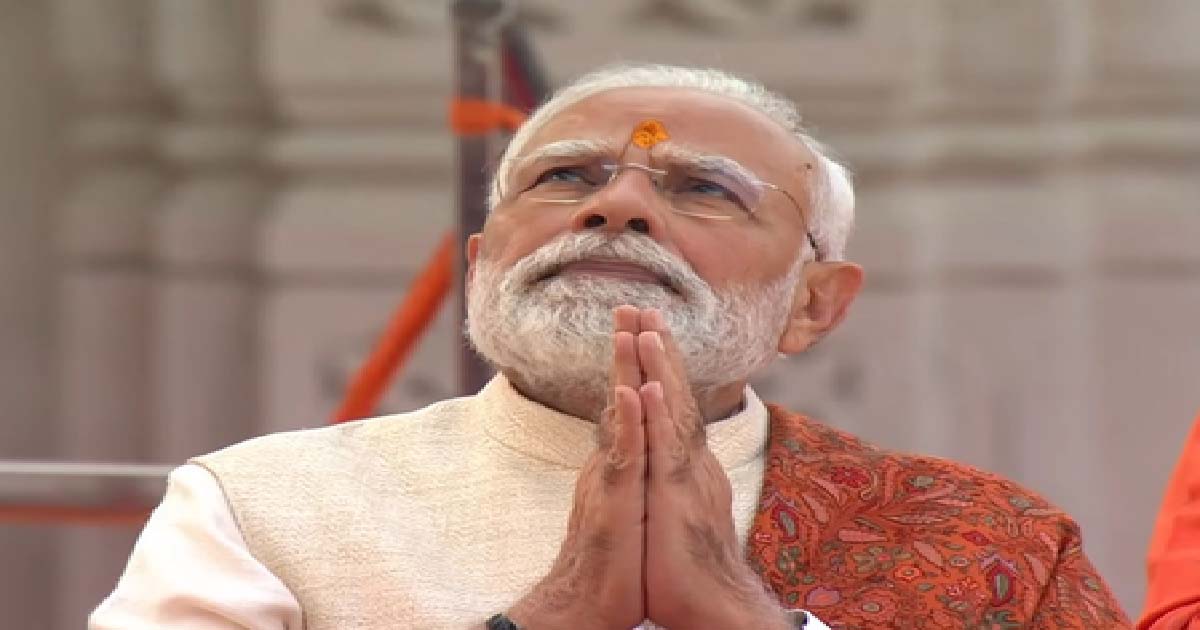
Ayodhya, Nov 25: After leading the ‘Dhwajarohan Utsav’ by hoisting the sacred flag atop the Ram Janmabhoomi Temple on Tuesday, Prime Minister Narendra Modi said that the day marks the end of centuries of pain and struggle.
PM Modi and RSS chief Mohan Bhagwat led the ‘Dhwajarohan Utsav’ at the Ram Janmabhoomi Temple by hoisting the specially-designed sacred saffron flag atop the temple.
Addressing the large gathering from the Ram Janmabhoomi temple premises, PM Modi said, “Today, the city of Ayodhya is witnessing another turning point in India’s cultural consciousness. Today, the entire country, the entire world is filled with devotion for Lord Ram.”
The ceremony holds deep cultural and spiritual meaning for devotees across the country.
“Every Ram devotee’s heart is filled with immense satisfaction, gratitude and happiness. ‘Sadiyo ke ghav bhar rahe hain (centuries old wounds are healing today)’. The pain of centuries is coming to an end today, and the resolve of centuries is achieving success today. Today is the ‘poornahuti’ (final offering)’ of that ‘yagna’ whose fire burned for 500 years. The yagya that never wavered in faith, not even for a moment,” he added.
The flag, specially crafted for the Ram Temple, measures 22 feet in length and 11 feet in width. Designed by a parachute specialist from Ahmedabad, Gujarat, the flag weighs between 2 and 3 kilograms and has been designed to withstand winds at high altitudes.
The flag carries the Sun symbol, representing Lord Rama’s Suryavanshi heritage and divine radiance. The flag is adorned with an image of the Kovidara tree, Sun and Om. It is saffron in colour — symbolising fire, the rising Sun, sacrifice and dedication.
Speaking about the sacred flag, PM Modi said, “This Dharma Dhwaj is not just a flag, it is the symbol of the renaissance of Indian civilisation. The flag’s saffron colour, the symbol of the Sun, the holy word ‘Om’ and the Kovidar tree represent the glory of Ramrajya. This ‘Dhwaj’ is a resolution, a success, a tale of creation from struggle, a representation of a dream come true, an evidence of saints’ devotion and social participation.”
“This Dharm Dhwaj will become an inspiration of ‘Pran jaaye par vachan na jaaye’ (We will give our life to keep a promise). This will give a message that ‘Karma’ and ‘Kartavya’ should be given priority in the world. This will also make us resolve to maintain peace and prosperity in society, where no one is poor and suffering,” he added.
The event marks the completion of the temple construction.
National News
Six injured in fire at electronics shop in Hyderabad
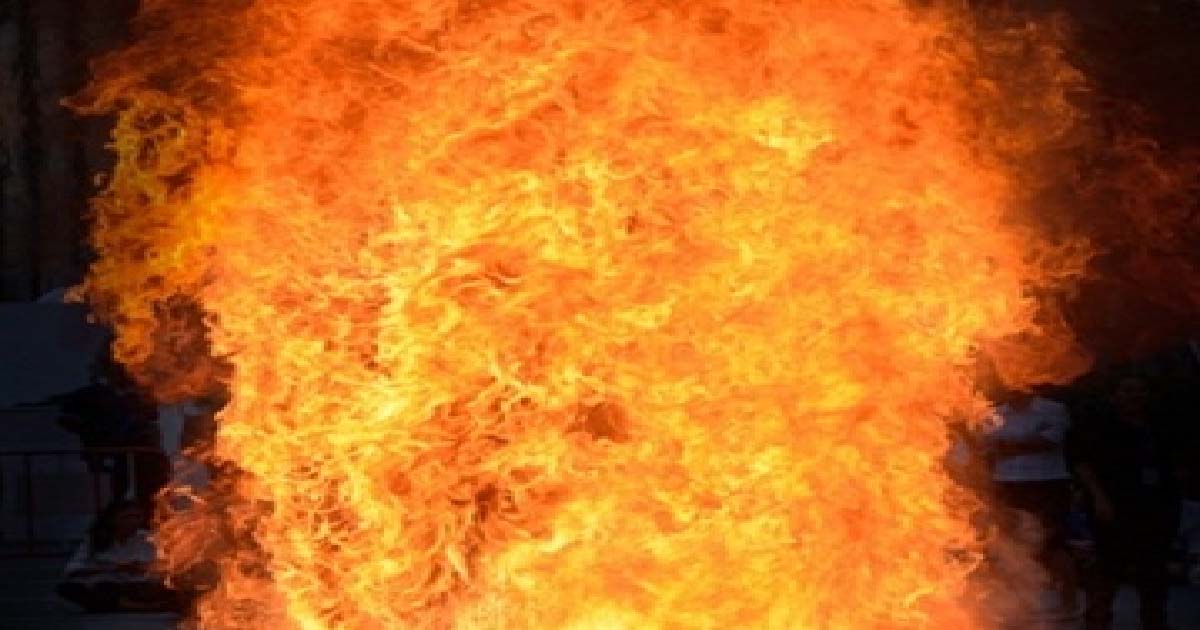
Hyderabad, Nov 25: Six people were injured in a massive fire in an electronics shop in the old city of Hyderabad.
On Monday night, the fire started in the electronics shop on Shahalibanda due to a short circuit, completely gutting it. A CNG cylinder explosion in a car parked in front of the shop further spread the blaze.
Eight fire engines, a skylift fire truck, and a firefighting robot were pressed into service to bring the blaze under control. It took more than two hours for the firefighting personnel to douse the flames.
The fire, which started in an electronics shop, spread to the adjoining warehouse and other shops, resulting in huge property loss.
A cloth shop was also completely gutted in the fire.
Window panes in the surrounding houses were also shattered under the impact of the explosion.
The fire was also suspected to have intensified due to the explosion of several refrigerator cylinders, geysers and electronic items stored in the shop.
Deputy Commissioner of Police (South Zone) Khare Kiran Prabhakar said, prima facie, the fire started in an electronics shop due to a short circuit.
The flames engulfed the CNG car parked in front of the shop, and the cylinder blast caused the fire to spread rapidly.
Few people were working in the shops, and a few were also sitting in the car. Because of fire and an explosion, six people were injured and admitted to the hospital.
The DCP told the media that firefighters brought the situation under control, preventing further damage.
He appealed to citizens not to believe fake news circulating on social media. He urged them to rely only on official information from the police and avoid sharing unverified news that may lead to unnecessary panic.
According to eyewitnesses, the loud explosion was heard in a radius of one kilometre, triggering panic among residents.
Locals also claimed that the clock on the nearby Rajarai Clock Tower also stopped at the time of the explosion.
-

 Crime3 years ago
Crime3 years agoClass 10 student jumps to death in Jaipur
-

 Maharashtra1 year ago
Maharashtra1 year agoMumbai Local Train Update: Central Railway’s New Timetable Comes Into Effect; Check Full List Of Revised Timings & Stations
-

 Maharashtra1 year ago
Maharashtra1 year agoMumbai To Go Toll-Free Tonight! Maharashtra Govt Announces Complete Toll Waiver For Light Motor Vehicles At All 5 Entry Points Of City
-

 Maharashtra1 year ago
Maharashtra1 year agoFalse photo of Imtiaz Jaleel’s rally, exposing the fooling conspiracy
-

 National News1 year ago
National News1 year agoMinistry of Railways rolls out Special Drive 4.0 with focus on digitisation, cleanliness, inclusiveness and grievance redressal
-

 Maharashtra1 year ago
Maharashtra1 year agoMaharashtra Elections 2024: Mumbai Metro & BEST Services Extended Till Midnight On Voting Day
-

 National News1 year ago
National News1 year agoJ&K: 4 Jawans Killed, 28 Injured After Bus Carrying BSF Personnel For Poll Duty Falls Into Gorge In Budgam; Terrifying Visuals Surface
-

 Crime1 year ago
Crime1 year agoBaba Siddique Murder: Mumbai Police Unable To Get Lawrence Bishnoi Custody Due To Home Ministry Order, Says Report



